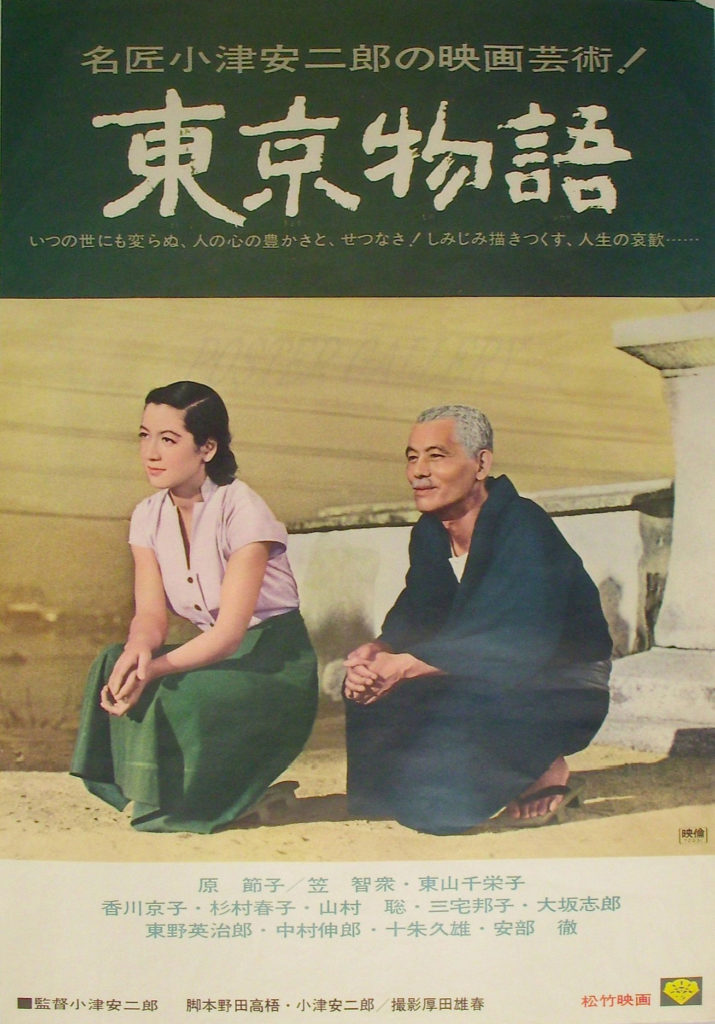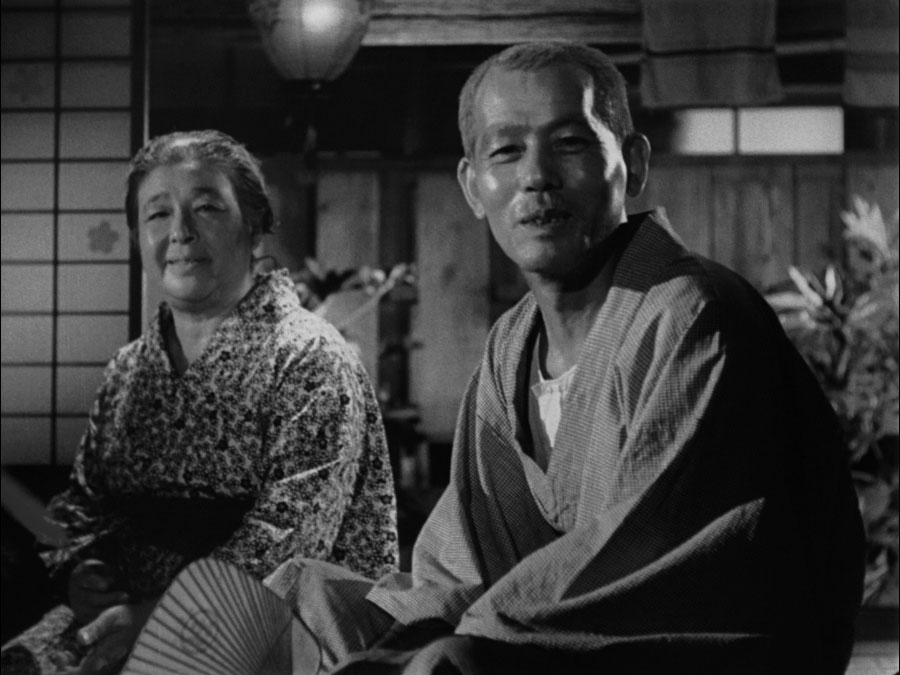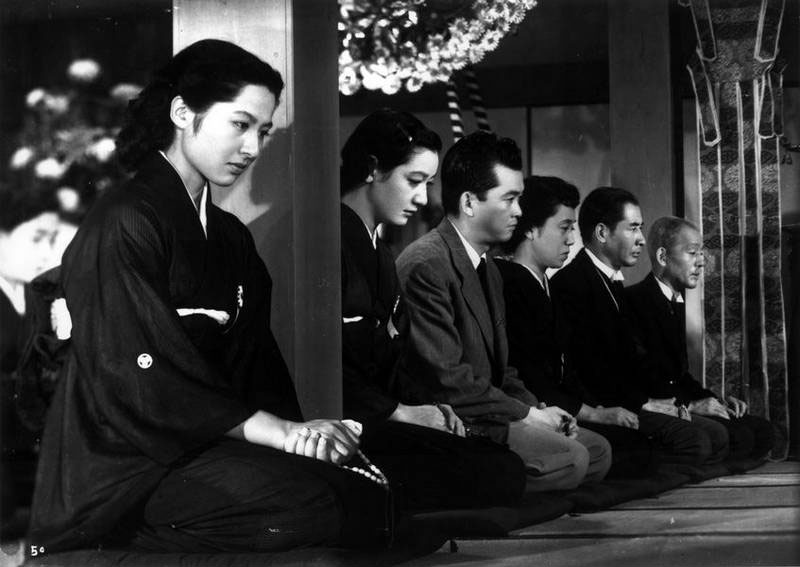
Director: Yasujiro Ozu
Writer: Yasujiro Ozu, Kogo Noda
Cast: Chishu Ryu, Chieko Higashiyama, Setsuko Hara, Haruko Sugimura, So Yamamura
Producers: Takeshi Yamamoto
Music: Takanobu Saito
Cinematography: Yuharu Atsuta
Editor: Yoshiyasu Hamamura
Cert: U
Running time: 136mins
Year: 1953

What’s the story: Japan, 1953. Elderly couple Shukichi (Ryu) and Tomi (Higashiyama) travel from the south of the country to visit their adult children in a Tokyo suburb. But, they are largely ignored, save for their widowed daughter-in-law, Noriko (Hara).

What’s the verdict: That some audiences may be daunted by the prospect of viewing Yasujiro Ozu’s 1953 masterpiece is understandable.
First up, it’s a masterpiece from 1953, originating in Japan. This means it will be a “big watch”.
Secondly, it routinely places high in those “greatest films of all time” polls critics love putting together.
In 2012, Sight and Sound declared it the third best film ever made behind Vertigo and Citizen Kane. A 2018 BBC critics’ poll named it the third best foreign language film ever made, after Seven Samurai and Bicycle Thieves. Roger Ebert included it in his list of Great Movies. Derek Malcolm proclaimed it the best film of the twentieth century.
The title alone carries a weight suggesting a film encompassing the history and character of that sprawling metropolis. Ozu is often regarded as an austere director, with his immobile camera fixed low to the ground, framing characters in a medium-wide shot.
And it’s in black and white and runs fifteen minutes longer than Star Wars…
Happily, any worries about Tokyo Story being a difficult chunk of homework cinema swiftly dissipate as Ozu unfolds his story. Although tackling crime and comedy genres early in his career, by the post-war period the filmmaker was firmly fixed on “home dramas”, those gently told tales of the family with an often deceptively powerful impact.
So viewers may find themselves surprised to discover that this classic of Japanese cinema is a completely relatable tale of an elderly couple up from the country to visit their children. Only to be passed around by kids who’d rather be spared the hassle.
Ironically, this slight sounding plot may lead to head scratching as to why the film is so venerated. The answer is simple: Ozu, in the words of Japanese film expert Alexander Jacoby, “shows you the tiny, quiet details of everyday life, and through that he shows you the whole world.” And Tokyo Story is the finest illustration of this.

The generation gap is evident in Shukichi and Tomi’s fixed smiles as their children repeatedly cancel plans and ultimately pack them off to a spa more suited to people half their age. It’s in the words not spoken between the couple that nonetheless suggest disappointment in their children.
Yet, Ozu and co-screenwriter Kogo Noda don’t paint characters in broad strokes. The children are not villainous, more preoccupied with lives less than what was hoped for. Even the “doctor son” Koichi (Yamamura) is a GP in his modest Tokyo suburb, rather than working in the city.
We learn Shukichi and Tomi’s marriage has not always been easy, with references to his past drinking. Significantly however, the only moment in the film when Shukichi speaks plainly is during a drinking session with two old acquaintances. Family life is something to be worked upon, and certain things are best left unsaid to nearest and dearest.
Bar their youngest daughter who lives with them in the south of Japan, Shukichi and Tomi are treated most warmly by their daughter-in-law Noriko (the legendary Hara), widowed when their son went missing, presumed dead, in the war.
Tokyo Story is part of Ozu’s “Noriko Trilogy”, unrelated films linked by Hara playing different characters who share the same name. The other two are 1949’s Late Spring and 1951’s Early Summer. Both are highly recommended.
Hara’s flair for a ‘polite regret’ is on full display here. Yet, despite being given permission by her aged in-laws to re-marry (still something of a cultural no-no at the time) Noriko is reluctant. Primarily, you suspect, because her marriage sounds less than idyllic.
Which is a tension at the heart of many Ozu movies; the family unit holds everyone (and society) together, but marriage can be a hungry beast. Interestingly, neither Ozu or Hara ever married.
The actors’ restrained performance style conveys waves of emotion. Ryu was one of Ozu’s preferred players and over the course of the film his Shukichi absorbs disappointment and tragedy with the reflection of someone performing penitence. Which may be the case from his drinking days.
Late in the film, Shukichi receives tragic news. Ryu’s performance here is sublime, showing someone whose heart is quietly breaking and leaving the audience to fill in the sobs. Anthony Hopkins’ flawless study of smothered sadness in The Remains of the Day stands as a good comparison.

Higashiyama is well cast against Ryu. Small and plump where he is tall and angular, the pair operate as a perfect unit, understanding each other without needing to say much and comfortable after a lifetime together. Toward the beginning of the film, Ozu composes them in two-shot against the one-shots on actors playing their children, reinforcing a bond absent in the seemingly brittle marriages of their kids.
Tokyo Story acts as a fine introduction to Setsuko Hara. Although a supporting character here, the decency and warmth in her performance, along with a nick of pathos, is another of the film’s highlights. For Ozu, Hara would often play selfless women tossed about by society’s expectations: those who want more are urged to watch Late Spring and Late Autumn (the director liked seasonally titled movies).
Famed for his low camera positions, reportedly intended to reflect the viewpoint of someone kneeling on a tatami mat, Ozu keeps his visuals largely composed from this vantage point. Rather than having the effect of everything pressing down on characters, it instead allows viewers to immerse themselves in their homes and world, creating a sense of genuine intimacy. A sense compounded by characters often talking directly to camera, as if addressing the viewer.
Watch the scene where Noriko hosts Shukichi and Tomi in her modest apartment to see how this simple, performance-focussed style has a deep cumulative emotional impact.
Ultimately, Tokyo Story is a film about time. How it separates generations, inevitably removes loved ones from your life, passes far too quickly, and also denotes uncertain futures. All of which is encapsulated in a watch gifted to Noriko as the film approaches its close.
Fittingly then, it took years for this masterpiece to be recognised as a key moment in 20th century cinema. Deemed “too Japanese” for Western consumption, the 1953 film took years to secure wide international distribution and was still being discovered by influential American critics as late as 1972. It first featured in Sight and Sound’s decennial Greatest Films of All Time poll in 1992 (and has appeared in every poll the magazine has conducted since).
All of which is ironic considering Tokyo Story was partly inspired by Leo McCarey’s 1937 movie, Make Way for Tomorrow, a Hollywood movie released by Paramount Studios.
Even in Japan the film was not immediately lauded. Its sole win at the country’s Mainichi Film Awards was Best Supporting Actress for Haruko Sugimura, playing the eldest daughter. Sugimura won for this film and Tadashi Imai’s An Inlet of Muddy Water. That film also won Best Film and Best Director, and was named Best Film that year by Kinema Junpo (Japan’s equivalent to Sight and Sound). Yet, An Inlet of Muddy Water is a five star movie now largely unknown. Only time will tell if it is rediscovered by new audiences.
But, be happy we can enjoy Ozu’s Tokyo Story, a bittersweet story that nourishes the soul.
Rob Daniel
Twitter: rob_a_Daniel
iTunes Podcast: The Movie Robcast

Pingback: Kristy Matheson on Kinuyo Tanaka: A Life in Film
Pingback: BFI Japan 2020's Classics Collection - 5 Must-See Movies
Pingback: Family Matters: Dr. Alexander Jacoby on Yasujiro Ozu's continued importance